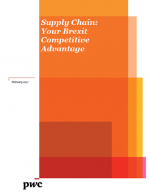Food & Drink Customer Centricity
In recent years, product variety in the food & drink industry has exploded and competition has become intense.
This white paper highlights the challenges the food and drink industry faces and the need to evolve to a changing customer and evolving marketing conditions.
The discussion will highlight three key areas:
- Importance in becoming more demand-driven and customer centric
- Issues faced by food and drink retailers and manufacturers
- Making customer centricity a reality
The Importance of Customer Centricity
In an increasingly demand-driven world with consumers more connected and better informed than ever before, it is vital for companies to keep up with the ever-changing environment or risk getting left behind.
Consumers expect better products, the latest food and drink trends, transparent and competitive pricing, as well as the power to control their own transactions and engage with their provider.
With advances in modelling, analytics and data technologies, companies are able to access more granular customer insight to fuel a more advanced and accurate demand forecast which truly reflects customer demand and leans toward a customer centric approach. To be truly customer centric requires changes to both process and technology.
This is a new mind-set for many organisations and will require the need to embrace advanced technology. Many companies have a more traditional structure with supply-driven models operating in isolation of the customer-facing side of an organisation.
Predominantly, forecasting has been the domain of the manufacturing division or the area of the business primarily focusing on the mechanisms of product movement, thus leaving input from other departments limited to sales history and promotional plans.
Real customer insight, such as behavioural segmentation, product preferences, channel attributes, promotional and price sensitivity have not been part of the model. Added to the complexity of today’s retailer challenges, is the increase of online sales and the need to implement a truly omni-channel strategy.
Online is often treated as an ‘additional’ sales channel with its supply chain simply added to the mix, however it is clear from the figures below that companies are not addressing the issue fully.
In a recent survey to identify practical ideas and opportunities retailers needed to succeed, it was noted that:
- 71% of retailers do not have a formal omni-channel demand planning processes
- 82% of retailers offer different assortments across channels
- 65% have plans to upgrade their merchandise planning systems while 50% plan to upgrade their allocation planning solution
Whilst the majority of retailers are planning to upgrade their systems it is clear that there is much more work needed than simply upgrading planning systems. Instead, retailers and manufacturers need to consider ground-breaking changes in the way they structure their organization.
What’s Related




Favorites





